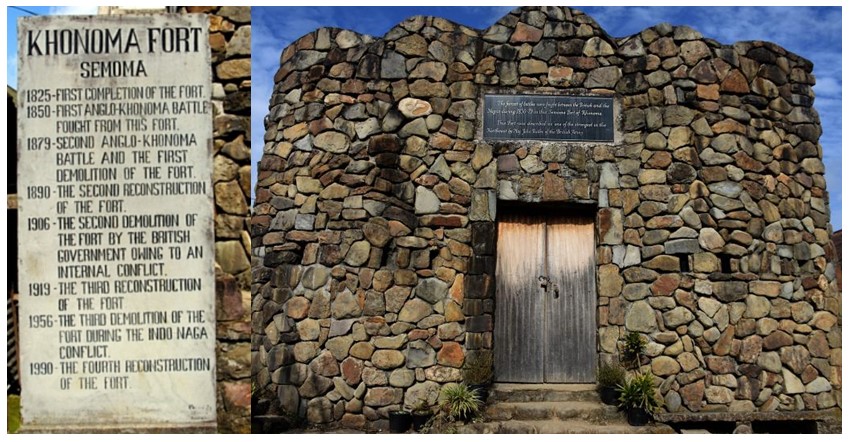The Battle of Khonoma (1879-1880):
The last and final resistance of the Nagas to the British
This article is a continuation from the previous article History # 5 – The Nagas during British Rule.
The Battle of Khonoma was fought during 1879-1880. Here is a brief history of The Battle of Khonoma.
The first Anglo-Khonoma battle was fought at Khonoma fort in 1850. Captain Vincent led a force from the Assam Light Infantry, the Cachar Levy ( Later known as ‘Assam Rifles’) and the Jorhat Militia to Mezoma and Khonoma to avenge Bhogchand’s death and remained there for six months, burning Khonoma during his stay.
Later in 1879, the British Political Officer (Deputy Commissioner) at Kohima, Guybon Henry Damant (G.H. Damant) was killed at Khonoma. Damant had heard that Naga villages were secretly acquiring arms, and that the villagers at Khonoma had acquired several of these weapons. On 13th October 1879 Damant set out to visit Jotsoma, Khonoma and Mezoma villages with an escort of 65 constables of the Frontier Police and 21 rifles from the 43rd Assam Light Infantry. At Khonoma, Damant was killed along with several of his men.
Following the death of G H Damant, a campaign against the Nagas ensued in which the 42nd and 44th Regiments with a wing of the 18th Native Infantry and a detachment of the 43rd Native Infantry took part, and which lasted till March 1880. Khonoma was taken on the 22nd November 1879. On November 23, Khonoma village was found to be deserted by the British troops. The defenders had moved to the Chakka Forts on the higher slope of Mt. Japfu above Khonoma. The British decided to block the site for it was difficult for them to attack as the defenders had already reached an altitude of about 8500 feet and proven fighting capabilities of the Khonoma warriors. Khonoma was burn down and 200 men from 44 Infantry under Major Walker was garrison at Khonoma. The British further carried punitive attacks on those villages that had participated in the siege of Kohima. Jotsoma was captured on the 27th November 1879 and every one of the 13 villages which had entered into the coalition against the British was either occupied or destroyed.

The most notable event of the war was that though the Khonoma men at Chakka Forts above the village were beleaguered by British troops, a party of Khonoma men from the Chakka Forts still managed a daring raid in January 1880 upon the tea garden of Baladhan in Cachar, more than 80 miles away. In the raid, they killed the manager, Mr. Blyth, and 16 coolies, plundered what they could, burned everything in the place, and returned.
On the 27th March 1880, the fort above Khonoma submitted and the war was at an end. Khonoma was razed to the ground and its site occupied by an outpost. Some of the terms and conditions imposed upon those villages which participated against the British included:
1. Surrender of firearms.
2. Rebuild villages on new sites without fortifications.
3. Pay one rupee per house tax and one maund of rice and fifteen days labour to the State per year.
4. Elect headman to collect revenue and to be responsible for the conduct of the village.
5. An extra fine of rice and labour exacted from those villages that took part in the Siege of Kohima.
After the close of this, the question of the policy to be adopted in dealing with the Nagas was submitted by the Chief Commissioner to the Government of India who in February 1881 finally decided that the position at Kohima should be retained, that a regiment should be permanently stationed in the hills, and that the district should be administered as British territory.
References:
- Census of India, Part IV – Assam, 1901).
- Census 1951 Assam – Naga Hills District Census Handbook
- Assam Administration Report, 1882-1940]
- A Book on Nagaland (NBSE)
PREVIOUS:
- History #1 – The Naga People
- History #2 – Origin of the Word ‘Naga’
- History #3 – Migration of The Nagas
- History # 4 – The Nagas and the Ahoms
- History # 5 – The Nagas during British Rule
NEXT: History # 7 – Formation of Naga Hills